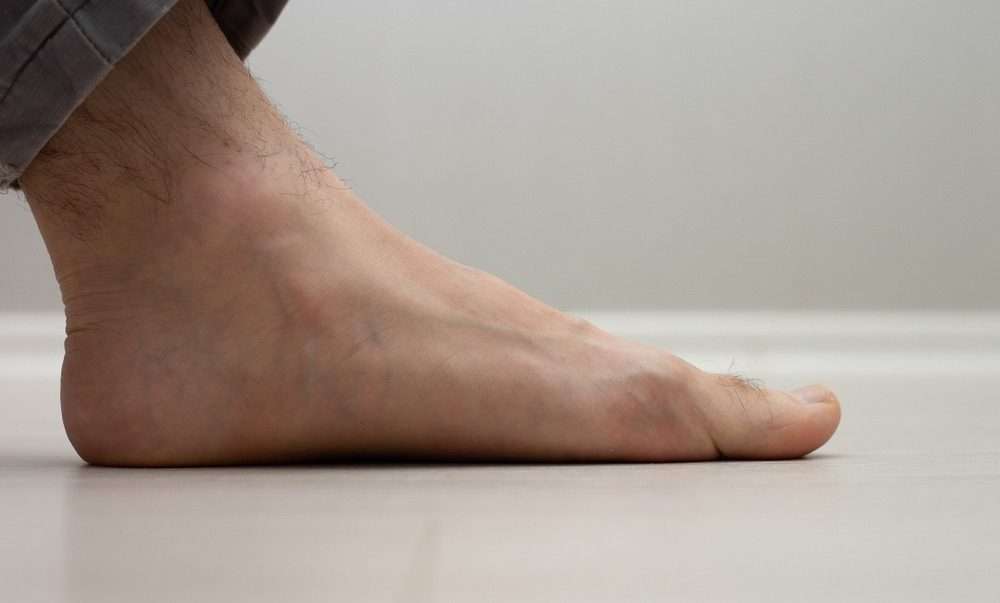The feet are rarely perceived to be the cause of joint pain.
However, even a minor plantar deformity can affect your posture and undermine your daily comfort.
Flat feet are one of the foot deformities that can cause lasting problems later in life.
When pain claims your joints and you begin experiencing a lack of balance in your movements, it’s in your own best interest to pay attention to your feet’s well-being.
Here is a list of various pains resulting from flat feet, along with the treatments available to relieve them.
Flat feet: knee pain
Your knees are absolutely crucial for the mobility of your body.
At the same time, they rely heavily on your feet to maintain proper alignment.
The imbalance caused by the presence of flat feet increases the mechanical stress on your knees.
Actions such as bending and stretching your legs while walking can sometimes elicit pain.
In the end, if your flat feet are left untreated, your knee joints can wear out prematurely as a result.
Flat feet: heel pain
While the knee facilitates mobility, your heel serves as support.
It also performs the tasks associated with absorbing shock when you are in motion.
If left untreated, flat feet can lead to several heel injuries, including:
- Heel spur;
- Plantar fasciitis;
- Achilles tendinitis.
Without proper attention, such pathologies can result in serious complications.
Therefore, it is important to visit your podiatrist when you notice that your foot is sagging and your heel is sore.
Flat feet: ankle pain
Flat feet are often associated with a deviation from the natural axis of the ankle.
This change in alignment hinders your ankles’ proper stabilization of your legs.
As a result, you may experience joint tightness and become more susceptible to the risk of painful injuries like a sprained ankle or tendinitis of certain muscles that stabilize the joint.
The Flatfoot Valgus
When flat feet offset the alignment of the ankle inward and the heel outward, it is called the flatfoot valgus.
Flatfoot valgus is not only at the root of certain pains, but it also increases the severity of ligament damage and ensuing functional limitations.
When your flatfoot develops into valgus, it is usually the outside of the ankle and the arch of the foot that cause the most pain.
The consequences of flatfoot in adults and possible treatments
Unlike the much more malleable and easily corrected flat feet among infants, flat feet in adults require advanced treatment.
On top of that, acquired flatfoot often manifests along with other health problems such as:
- Obesity;
- Diabetes;
- Loss of muscle tone.
If you ignore flat feet, your entire body will suffer over time.
Among other things, you may experience problems such as:
- Osteoarthritis;
- Achilles tendinitis;
- Plantar fasciitis;
- Lower back pain;
- Muscle weakness of the foot;
- And in the most severe cases, stretching or rupture of the internal tendons of the ankle.
Luckily, there is no shortage of treatments that your podiatrist can suggest to prevent the structure of your feet from interfering with your daily life.
To fix your problem at its root, the podiatrist usually suggests:
- Personalized foot orthoses: Shaped with the help of technologies such as 2D / 3D scanning, they are used to compensate for the loss of tone in your feet and rebalance your posture.
- Custom footwear: Similar to plantar orthotics, these relieve your pain while supporting your arch-less feet.
- Flexible or Articulated Ankle Braces.
- Prescribed Tibio-Pedicure Orthotics.
As a last resort, if your feet’s deformity has progressed too far, the podiatrist will refer you for orthopedic foot surgery.
If you have flat feet, consult your podiatrist without delay
Benefiting from extensive experience and modern diagnostic equipment, the podiatrist has everything to provide you with lasting relief.
To learn more about the different treatments for flat feet, visit your PiedReseau clinic as soon as possible.

